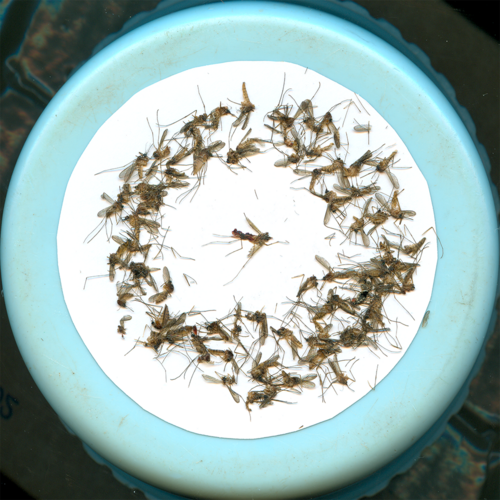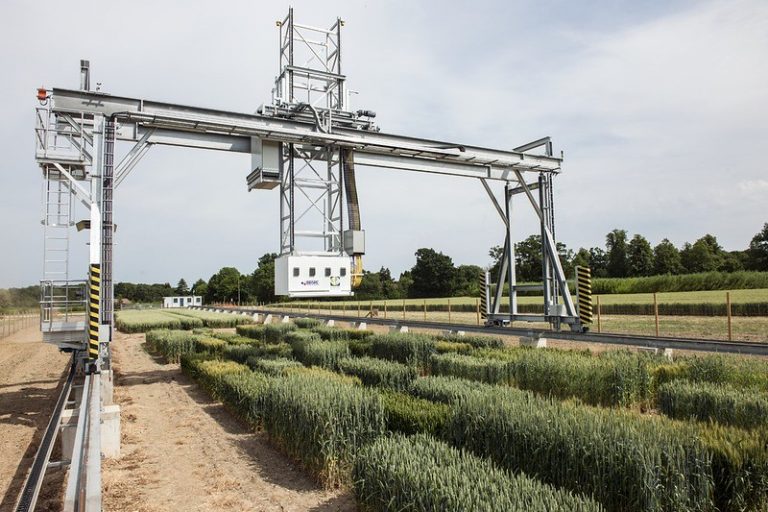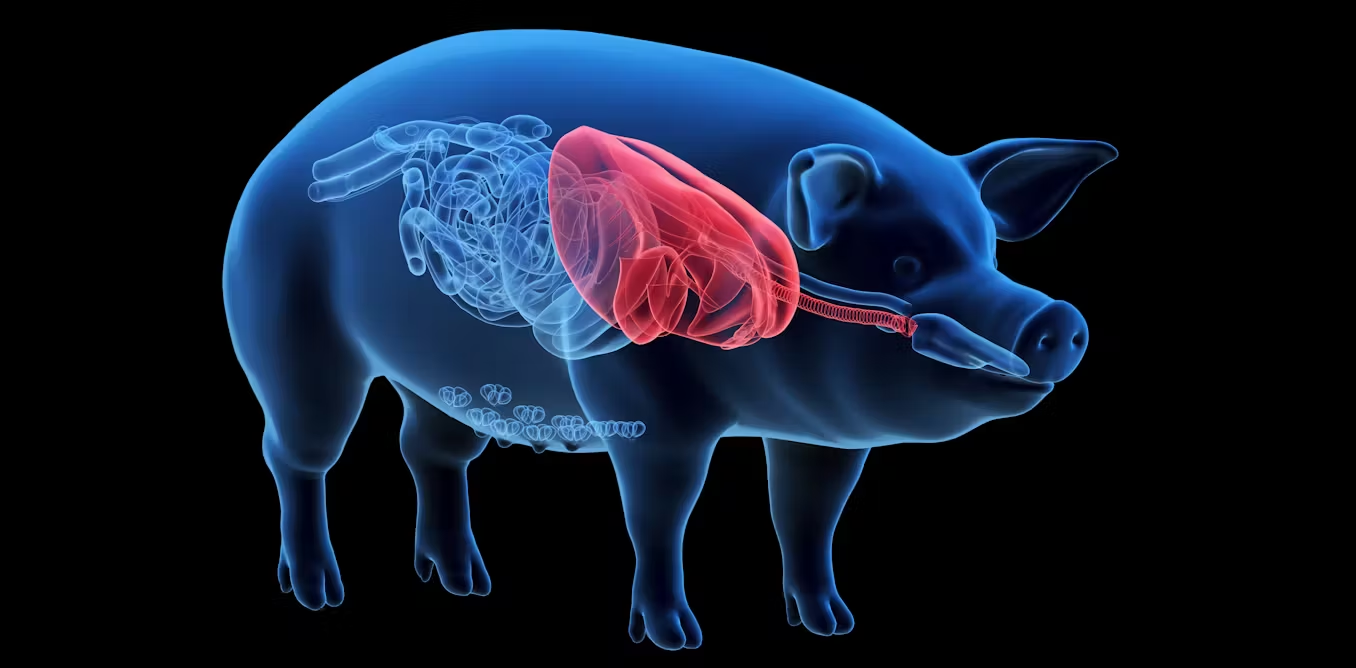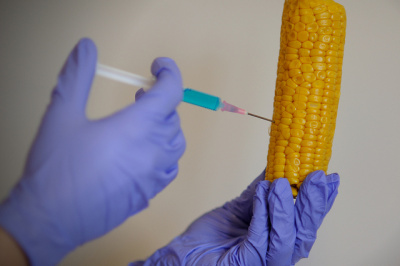Actualités
Burkina Faso – The Target Malaria project continues despite irregularities
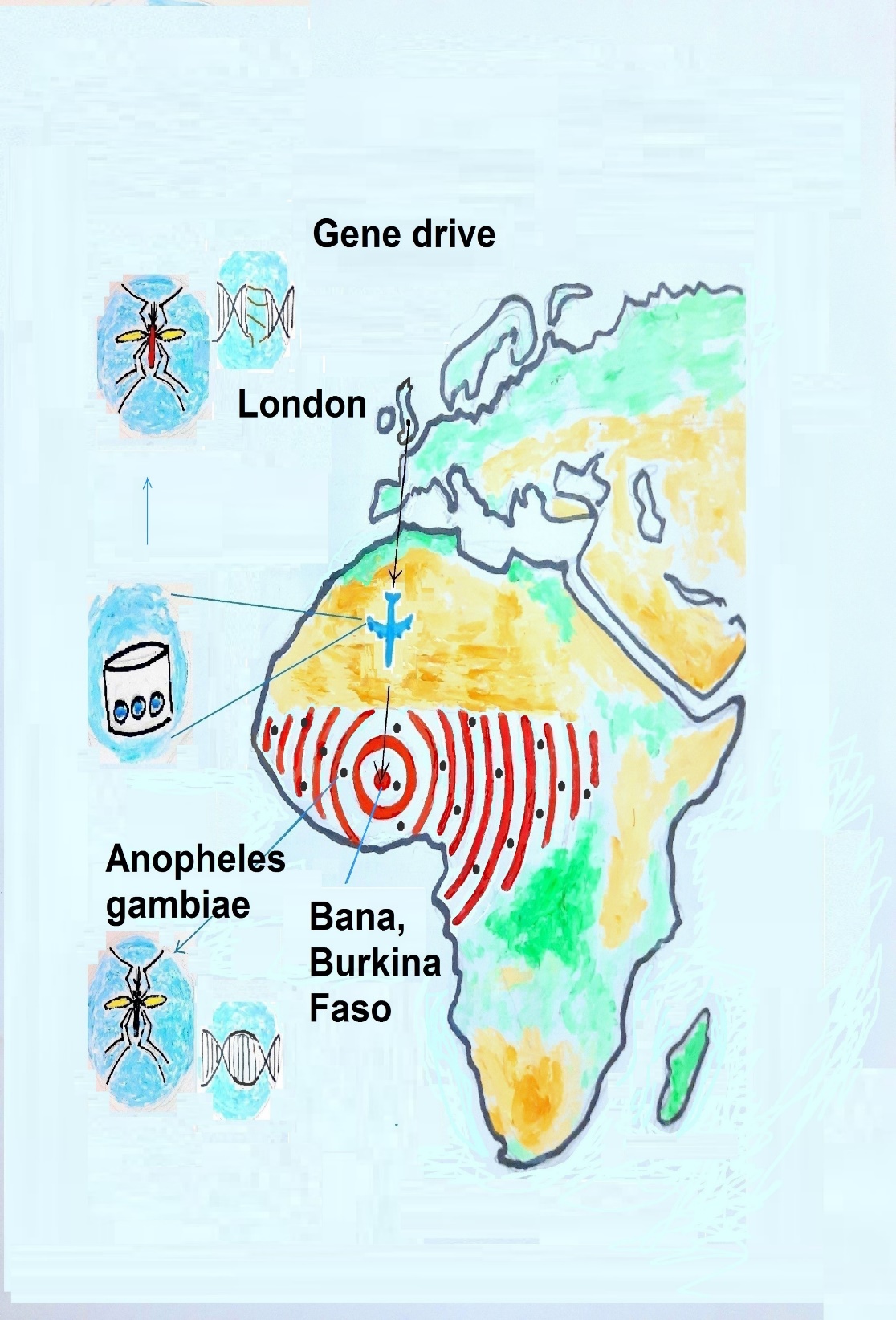
In July 2021, the National Biosafety Agency (ANB) of Burkina Faso authorized Target Malaria, a project that fights against malaria, to import transgenic mosquito eggs. A first release took place in 2019, in the locality of Bana. This article intends to show the numerous regulatory irregularities of the project first phase.
On October 21, 2021, NEPAD (New Partnership for Africa’s Development), an African Union agency, announced the authorization given in July 2021 by the ANB (National Biosafety Agency of Burkina Faso) to import genetically modified male mosquitoes, known as “biased males”, intended for use in a confined environment. This strain importation constitutes the beginning of the second phase of the Target Malaria experiment. The first phase culmination took place in July 2019, with the release of 6,400 transgenic mosquitoes in Bana (rural village in the center west of the country) [1] [2].
NEPAD defends gene drives
NEPAD is heavily involved in the activities of the ANB. However, this African Union technical agency deliberately promotes gene drives.
The African Union spoke out for gene drives during its 29th ordinary session, declaring that it “commits (…) to investing in the development and regulation of the gene-drive technology” (African Union, 2017).
The NEPAD also released a pro-gene drive report entitled “Gene Drives for Malaria Control in Africa”. This report states in particular that “no major risks are foreseen that cannot be mitigated in the application of gene drive technology for malaria elimination, and that the potential benefits will almost certainly outweigh any minor risks observed” (NEPAD, 2018, p.25). To support gene drive development in Africa (assessment, preparedness, regulation, dissemination, education), NEPAD received $2.35 million from the Open Philanthropy Project (Open Philanthropy Project, 2017), which is one of the sources of funding for Target Malaria (Target Malaria a).
Concretely, in 2020, the African Biosafety Network of Expertise (ABNE), which depends on NEPAD, organized training for members of the Institutional Biosafety Committee (IBC) and the National Biosafety Committee (NBC) of Burkina Faso. (NEPAD 2020a, NEPAD 2020b). This network, highly favourable to gene drive, was created with funding from the Bill & Melinda Gates Foundation (Glover et al. 2018) in order, with the collaboration of the University of Michigan (United States), to » connect African biosafety regulators with advances in technology – an initiative aimed at reducing poverty through improved agricultural practices.” [3].
The numerous irregularities of the project first phase.
The first phase of the Target Malaria project experimentation involved sterile male transgenic mosquitoes. This phase included the following activities: importation, studies in a confined environment, release of several thousand mosquitoes in 2019 and monitoring of this release. It is characterized by a series of regulatory and ethical irregularities:
• an absence of the independent risk assessment before importation and before release,
• an absence of the communities informed consent,
• an absence of the public involvement in the decision-making process regarding the importation and the release.
A sham of risk assessment of the 2019 release
The genetic construct concerned by the strain of the first phase of the Target Malaria project, called Ac(DSM)2, was created in 2008 in the laboratory of Andrea Crisanti, at the Imperial College London, a member of the Target Malaria project. This genetic modification is composed of several sequences: a nuclease gene, called I-Ppo-I, which induces sterility in the male mosquitoes, two fluorescence marker genes, promoters and terminators (Windbichler et al. 2008) . This transgenic modification is transmitted according to the classic rules of heredity, to half of the descendants. It is not a gene drive that is transmitted hegemonically to all the descendants.
The Ac(DSM)2 transgenic «construct was created synthetically based on sequence data, and thus the Ac(DSM)2 strain was not exposed to the living source organisms through the development process» (Target Malaria b). This means that it has never been part of a living organism and its expressions are unknown.
The I-Ppo-I gene controls an endonuclease which is capable of recognizing and splitting a specific DNA sequence (recognition site). According to Target Malaria, only one specific sequence of this construction is found on the X chromosome of the Anopheles gambiae species (Windbichler et al. 2008).
The genome study of the Anopheles gambiae local population, performed by Target Malaria on a sample, has shown the existence of a single recognition site specific to the endonuclease controlled by the I-Ppo gene -I, (Windbichler et al. 2008), a recognition site located in one gene of the X chromosome. This means, for Target Malaria, that the is no other gene, apart from the one on the X chromosome, that may be altered by the action of the endonuclease in question. Does the theory presented by Target Malaria withstand closer analysis? Here are some elements that question this assertion.
The risk of the genetic construct transfer to local population and to other mosquito species is possible. Firstly, the population released in 2019 contained as well, unfortunately a small number of genetically modified female mosquitoes, estimated by Target Malaria at less than 0.5% (Target Malaria b, Hayes et al. 2018). Secondly, the recapture rate of genetically modified mosquitoes during the monitoring was particularly low (between 0.3% and 1.7%) (Hayes et al. 2018). The low recapture rate creates a spread of the genetically modified mosquitoes spreading out of the trial site area, this event that can be favoured by the winds (Dunphy, 2019).
And, thirdly, the Target Malaria notes that there is a risk that the I-Ppo-I gene may be lost or silenced and the strain will revert to be fertile again (Target Malaria b).
The Anopheles gambiae species is present in a vast area that covers most of the countries of West and Central Africa, it has a very high number of individuals, distributed in diverse ecological zones.
The species may show great genetic diversity in some of these areas. Because of a statistical phenomenon called “sampling error”, some individuals in the Anopheles gambiae wide habitat area may have the specific recognition site for the I-Ppo-I gene endonuclease in the genome sites other than that identified by preliminary Target Malaria studies, or these sites may arise as a result of mutations or recombinations.
In this case, the transfer of the genetic construction to the local population can cause the alteration of other genes, apart from the one on the X chromosome, by the I-Ppo-I endonuclease action.
Absence of independent risk assessment
Burkina Faso’s biosafety law requires that « no decision to import, to use in a confined environment, to release or to market a genetically modified organism may be taken by the National Biosafety Agency without prior assessment of the risks to human and animal health, to biological diversity and to environment and the resulting socio-economic consequences” (Law No. 064-2012/AN, 2012, article 24).
The risk assessment which enabled the ANB to deliver to Target Malaria an authorization for the release of genetically modified mosquitoes was carried out by the CSIRO (Commonwealth Science and Industrial Research Organisation, Australia) (Target Malaria v. Hayes 2018). However, Burkina Faso’s biosafety law also stipulates that “any natural or legal person having any direct interest whatsoever in the work of genetically modified organisms, should not participate in the assessment of the risks relating to these modified organisms” (Law N° 064-2012 /AN 2012, article 26).
The CSIRO report is not an independent assessment, as this organization participates in the “Safe Genes” gene drive project funded by DARPA (U.S. Defence Advanced Research Projects Agency) (Godwin, 2017). Yet, DARPA also funds Target Malaria (Target Malaria a). The CSIRO also participates in the GBIRd (Genetic Biological Control of Invasive Rodents) program and promotes gene drive for rodents to various governmental agencies (Wilson, 2018).
The CSIRO report lacks empirical data; its methodology is based primarily on assumptions and expert opinions. For example, the CSIRO calculates the probability of failure of the genetic construct to sterilize male individuals of the GM strain on the basis of the assumption that the effectiveness of the construct in the field will be the same as observed. under laboratory conditions (Hayes, 2018 – 64, Ex. Figure 4.8).
Leach and al. point out that technological solutions frequently fail to work and create further problems because they are often modelled in labs or on computers, methodologies which do not reflect the complexity of real world situations (Leach et al. 2010, in Lebrecht et al. 2019). The CSIRO itself admits the possibility that its calculations are incorrect, saying « The possibility that the risk models and calculations are incorrect justifies the monitoring of Ac(DSM)2 strain after the ∅ field release » (Hayes, 2018 – 6).
Absence of fully informed consent
Target Malaria obtained the signature of the Bana village community acceptance form from people who do not understand anything about the project, and who do not realize the issues of their signature.
« The community acceptance form was a four-pages document, composed of two sections: an information sheet and a signature sheet. The information sheet included key information about the study: introduction to the project context, project steps, information about the sterile male mosquitoes, objectives of the release, compliance with regulatory requirements, ethical considerations, benefits, team in charge of the protocol, confidentiality of the information, expected results and the contact details of the team and of the institutional ethics committee » (Pare et al, 2021).
The signature sheet was signed by the village and project representatives.
« Four representatives – whose legitimacy had been confirmed during the process – signed on behalf of the village: the chief, a councillor and two members of the VCD bureau. A member of the project team who worked directly in the village also signed the form » (Pare et al, 2021).
Target Malaria claims to have organized numerous information meetings about the project and that the 130 households of Bana were involved (Pare et al, 2021). However, one Bana resident said that “ most of the project activities took place in the centre of the village, and as she lived further away, she was not involved. (Fuhr.2018).
The journalists’ Investigations show that, despite the signing of the community acceptance form, the Bana residents did not know much about the project and some of them expressed concerns about it (Fuhr, 2018).
« If I am not able to understand, I cannot give my consent, because I do not know what damage will be caused by these mosquitoes. In any case, Anyway it scares me because I don’t know what is going to happen. They have gone to make sterile mosquitoes, but what will happen as a result? I really don’t understand » (Fuhr, 2018).
The Bana residents said that the project representatives did not talk about risks and only explained the first stage of the experiment (the release of sterile mosquitoes), without informing « on the last stage of the project, the most controversial: gene drive” (Pujol-Mazzini, 2019).
The project creates a financial interest for the village young people by giving them small jobs of « mosquito catcher » on their own bodies. They are called “volunteers”, with a payment of CFA franc 400 per hour (ACB et al., 2018), a significant sum for young people affected by poverty and unemployment, in a rural environment where the monthly peasant income is around CFA franc 30,000 (around €45).
The “volunteers”, by working for several nights as “mosquito collector ”, can earn a few thousand CFA francs (Carayol, 2020).
Since the release of genetically modified mosquitoes in July 2019, the “volunteers” are exposed to the risks of bites from genetically modified female mosquitoes (only female mosquitoes bite and transmit diseases) and from their descendants, but they are not informed on the risk by Target Malaria.
The visual support produced by the project for the Bana inhabitants indicates that the modified mosquitoes are sterile and do not give offspring (Pare et al. 2021, fig. 3).
There is very little information on the position of the Bana inhabitants regarding the experiment carried out in their village. Very few journalists were able to meet the inhabitants of the village center, the interviews being blocked by the hostility of the villagers fearing the loss of their job. (Carayol 2020
One Bana resident said: » If you see that people are reluctant to do interviews, it could be because they are afraid to losing the little benefit they get from the project « (Fuhr, 2018). Only a few residents of the outlying neighborhoods were able to respond to journalists.
The inhabitants of Nasso, a village located 5 km from Bana and which was not involved by Target Malaria project, told journalists that they were opposed to the project and that they fear “negative fallout” (Carayol, 2020), especially after the failure of Bt cotton (Fuhr, 2010) [4]. They said they feared being affected by the release of mosquitoes in Bana despite the reassuring words of Target Malaria, « since there is a significant movement [of people] between the two villages as they are located very close together” (Fuhr, 2018).
Absence of public involvement
The authorization for the 2019 release was given by the ministerial decree based on the public consultation report as a decisive factor. But what report are we talking about? Indeed, no consultation, as defined by Burkinabe legislation, was conducted.
“Public participation takes place at the first stages of the decision-making process, thus allowing public comments to be taken into account in the deliberations of the various advisory and decision-making bodies” (Decree N 2019 – 0455, article13).
The mechanisms planned for public participation include public inquiry, ordinary inquiries, consultations, public hearings and the citizen forum (Decree N 2019 – 0455, article 14).
The ANB must prepare, for the different forms of public participation, a summary of the risk assessment and the risk management plan, indicating « the deadline for submission of public notices and the next deadlines for the decision-making process” (Decree N 2019 – 0455, article 15).
None of these mechanisms for public participation in decision-making process has been implemented by the ANB. And this absence of consultation has been documented and denounced by the Burkinabe civil society (Macé, 2018).
[3] Bill & Melinda Gates Foundation, « NEPAD-MSU Land $10.4 Million to Improve African Agricultural Practices », communiqué de presse, 2009





